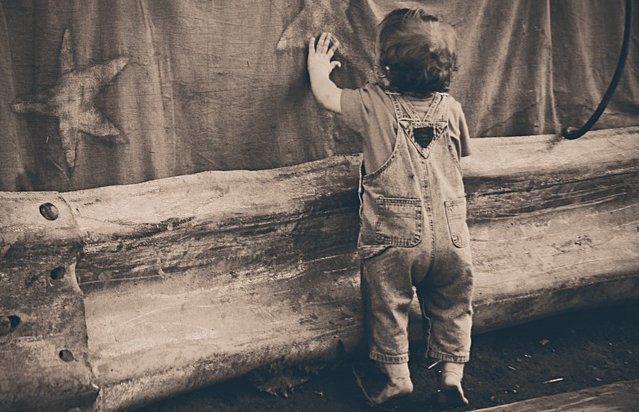Teaching Your Child the Alphabet: Explore 5 Fun Ways to Do It
Teaching your child the alphabet is one of the fundamental steps in their educational journey. Not only does it lay the foundation for reading and writing, but it also helps them develop language and communication skills. So every one of us does know the alphabet, so of course you can teach it to your child. But sometimes it is good to have a few ideas on how to start. Let’s dive in!
Preparing to Teach the Alphabet
Before diving into teaching your child the alphabet, it’s a good idea to prepare yourself and your environment. A good place to start is to identify your child’s learning style. Do they prefer visual aids, such as pictures and videos, or do they learn better through sounds or hands-on activities and games? Knowing their learning style can help you tailor your teaching approach to their needs.
Gathering materials such as alphabet books, posters, and flashcards is another step in preparing to teach the alphabet. These materials make learning more interactive and engaging for your child. Additionally, creating a learning-friendly environment helps your child to stay focused and motivated. You could also hang a poster with the alphabet wherever your child is normally coloring or painting so it acts as a motivator or inspiration.
By preparing yourself and your environment, you can set the stage for effective and fun alphabet learning for your child.

5 Ways for Teaching the Alphabet through Play
One of the best ways to teach the alphabet to young children is through play. Here are some fun and effective methods for teaching the alphabet through play:
Singing alphabet songs: Many classic alphabet songs can help your child learn the letters in a fun and memorable way. You can sing along with your child, play music in the background, or even create your own alphabet song.
Playing letter games: You can play numerous letter games with your child, such as “I Spy” or “Letter Bingo.” These games help children associate letters with their sounds and shapes.
Using letter blocks and magnets: Alphabet blocks and magnets are great tools for hands-on learning. Your child can use them to build words and practice letter recognition.
Alphabet scavenger hunts: Make a game out of finding and identifying letters around your home or neighborhood. This activity can help your child become more familiar with the letters and their shapes.
Forming the letters with play-dough: You can write the letters down for your child and it can imitate their form with play-dough. You can even buy play dough mats with the alphabet on them.
Through these playful methods, your child can learn the alphabet while having fun and engaging their senses. So whether you are unschooling, homeschooling or just doing a little bit extra at home, that is a good way to start.

Reading Books and Alphabet Books Helps to Learn the Letters
Reading books is another effective way to teach your child the alphabet and to get him interested in letters and reading. Here are some tips for incorporating books into your teaching:
Choosing age-appropriate books: Select books that are appropriate for your child’s age and are interesting. Look for books that feature colorful illustrations and simple, easy-to-understand text.
Pointing out letters and their sounds: As you read the book with your child, point out some letters and their corresponding sound. Encourage your child to repeat the sound.
Encourage your child to repeat letters and words: After reading the book, you can ask them to repeat the letters and words they learned. Repetition reinforces learning.
Alphabet books and Children’s books are a valuable addition, as they provide a good and engaging way to introduce your child to the letters of the alphabet and nurture a love of reading.
Using Technology to Teach the Alphabet
Technology (in moderation) can also be a fun tool for teaching the alphabet to children. Many children today use too much technology and have too few hands-on activities as it is, but still, there are ways to use technology to learn the alphabet. Here are some ways to use it:
- Alphabet learning apps: There are many apps designed specifically for teaching the alphabet. These apps often use interactive games and activities to engage children in learning.
- Educational videos and shows: Some many educational videos and shows can help children learn the alphabet. These shows often feature fun characters and catchy songs that can help children remember the letters.
- Interactive alphabet games: Many free online games can help children practice letter recognition and phonics. These games can be a fun and engaging way to supplement your child’s learning.
So technology can be used to support learning, but in my opinion, it shouldn’t be used exclusively. By using many different ways of learning you can provide your child with a dynamic and interactive experience.
Why Should Your Child Start with Uppercase Letters?
Learning the uppercase letters is easier for children because their form is more distinct. If you look at the uppercase alphabet there are just two letters that can be switched because they are similar (M and W).
But if you look at the lowercase letters in the alphabet there are many more options for confusion (b,d,p, and q can all be mistaken for one another, especially as children often write some letters mirrored in the beginning and there is also n and u, that look similar).

But once they know the uppercase alphabet they have it easier to connect the lowercase letters to them. So that’s why it is a good idea to start that way instead of the other way around, even if children will need lowercase letters more for everyday reading and writing.
Reinforce Learning through Repetition
Consistency and repetition are key to reinforcing your child’s learning. That is true for everything and so for learning the alphabet too. Here are some tips for reinforcing learning:
Consistency and repetition: You can set aside regular time for alphabet learning activities, such as reading alphabet books or playing letter games. But if your child develops resistance just let it go and start again when they show interest.
Celebrating milestones and achievements: When your child reaches a milestone, such as recognizing all the letters of the alphabet, celebrate their achievement. This can help motivate and encourage your child to continue learning.
Encouraging your child to practice writing letters: Writing letters can be a great way to practice the alphabet and their fine motor skills. Often children are thrilled if they finally can write their name or easy words like mom or dad. Provide positive feedback and encouragement.
Teaching your child the alphabet can be an enjoyable and rewarding experience for both you and your child. By using playful methods you ensure that it is a fun experience for your child and that learning continues to be a positive adventure in their lives.







